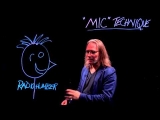Time Compresion
Time Compresion
With analog audio, it was very difficult to vary pitch and tempo independently. Vari-speeding tape would produce a proportional change in both pitch and tempo. There was a mechanical rotary head mechanism called a Zeitdehner, meaning “time stretcher” in German, which, in conjunction with vari-speeding the tape, could achieve independent pitch and tempo in 1975, Eventide introduced the H910 Harmonizer. It was an outboard signal processor that was used to change the pitch of an audio signal in real time without changing the speed. And, by using the Harmonizer and vari-speeding the tape, it was possible to change the tempo without changing the pitch. In fact, it was initially used by TV stations to time compress program material, in order to insert more digital audio, it’s become very easy to vary pitch, tempo, and with some plug-ins, even formants (the timbral elements) independently. Digital time compression is accomplished by discarding a number of samples (depending on the amount of change), and then cross-fading between the remaining samples to mask any discontinuities. Today, there are many plug-ins available that can produce time compression and expansion with very few artifacts.















